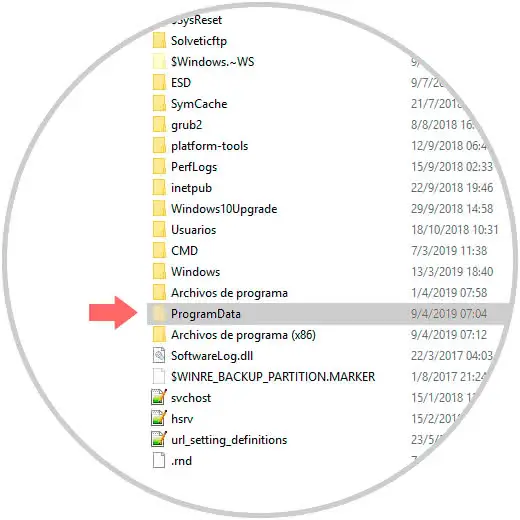
- CAN'T SEE PROGRAMDATA FOLDER INSTALL
- CAN'T SEE PROGRAMDATA FOLDER SOFTWARE
- CAN'T SEE PROGRAMDATA FOLDER PASSWORD
- CAN'T SEE PROGRAMDATA FOLDER WINDOWS 7
CAN'T SEE PROGRAMDATA FOLDER SOFTWARE
If you cant see the files, hard drive data recovery software - EaseUS Data Recovery Wizard can help. Windows 7: Click Organize, then click "Folder and search options." On the View tab, select "Show hidden files, folders, and drives." When your hard drive is not showing files though they still exist in Windows 11/10/8/7, try to reconnect the drive to your computer first. On the View tab, select "Show hidden files, folders, and drives." Windows 8: Click View, then click Options. Windows 10: Click View, then select "Hidden items." In the search field, enter %ProgramData%, then press Return.

Then, turn User Account Controls back on.

If your keyboard doesn't have a Windows key, press the Control (Ctrl) and Escape (Esc) keys on your keyboard.

CAN'T SEE PROGRAMDATA FOLDER WINDOWS 7
To reset your User Account Controls in Windows 7 or later, follow these steps: In iTunes for Windows, you can fix some authorization issues if you reset your User Account Controls. If you're not sure if your Apple ID has changed since you bought the item, check the purchase history of that Apple ID for the item to confirm that the item is on the list of purchases. If you forgot your Apple ID password, visit.
CAN'T SEE PROGRAMDATA FOLDER PASSWORD
CAN'T SEE PROGRAMDATA FOLDER INSTALL
Information related to your application and different for each Windows user logging on the machine should go instead in \AppData\Roaming\., or \AppData\Local\.īeware: as somebody already mentioned in comments, normally one needs administrator rights in order to work inside C:\ProgramData., hence you would need to prepare a setup project that, during install phase, would create the folder inside ProgramData and give the right permissions.You might have used a different Apple ID to buy the items that you want to play. To check, right-click the item and look for Remove Download in the menu.

That is the right place to store application-wide information on disk. Or is ProgramData not the right place to do that. Typically, to reduce chances of clashing, that could be something like YourOrganization\YourApplication, or YourFullName\YourApplication, possibly also appending version. Feasible solution is just to concat Environment.GetFolderPath(.) output with a custom path for your application. No it doesn't exist, at least when running on Windows 7 (don't know about Windows 8/ WinRT/ Windows Store apps). Does it exist a system like Path.GetDirectoryName(Application.UserAppDataPath), which will give me the exact folder to write, according to my application name and version?


 0 kommentar(er)
0 kommentar(er)
